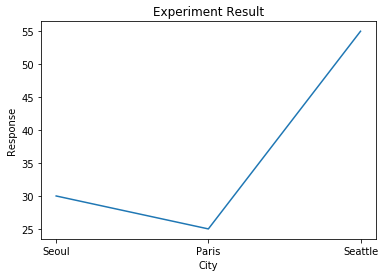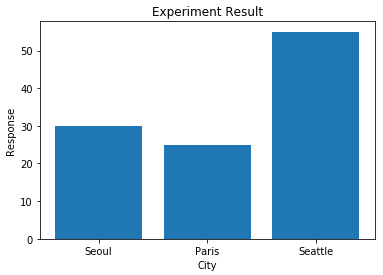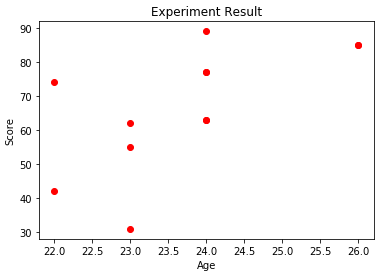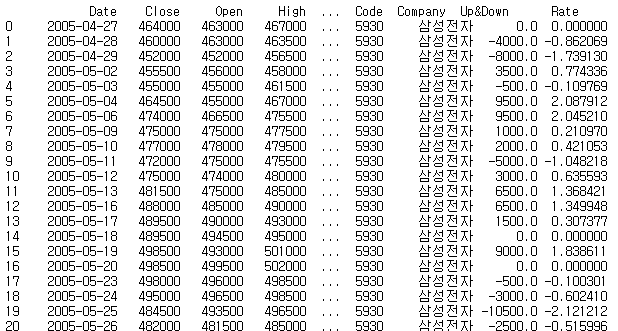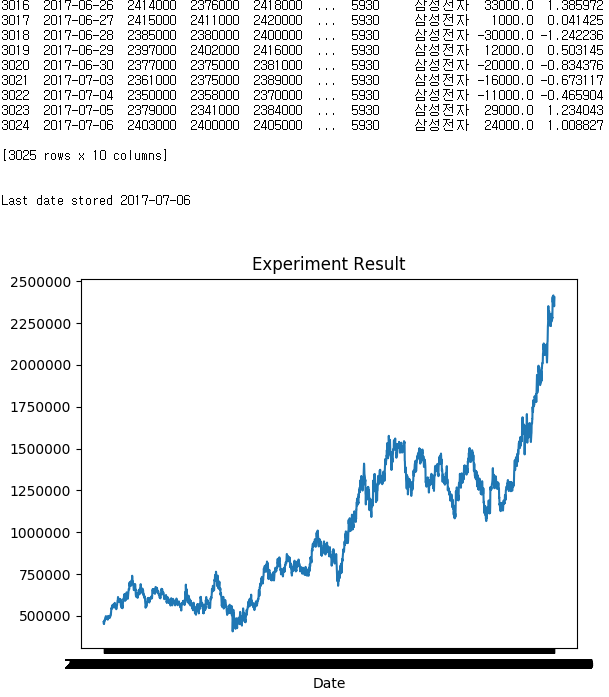Basic Data Types
Constant values by the types
| Value | Python Expression |
|---|---|
| Hexa decimal a1 | 0xa1 |
| 3.2e-12 | |
|
|
String
String concatenation by join()
Write the code for a Python function expand(x) that takes a list of strings, concatenates them, and returns the resulting string repeated three times.
- Input:
['string1', 'string2'] - Output:
'string1string2string1string2string1string2'
def expand(x):
return ''.join(x) * 3
Print string n times
n = 2; s ="Programming"; print(s * n); # ProgrammingProgramming
Basic Operators
Python Arithmetic Operators
| Operator | Description | Example |
|---|---|---|
| + Addition | Adds values on either side of the operator. | 10 + 20 = 30 |
| - Subtraction | Subtracts right hand operand from left hand operand. | 10 – 20 = -10 |
| * Multiplication | Multiplies values on either side of the operator | 10 * 20 = 200 |
| / Division | Divides left hand operand by right hand operand | 20 / 10 = 2 |
| % Modulus | Divides left hand operand by right hand operand and returns remainder | 20 % 10 = 0 |
| ** Exponent | Performs exponential (power) calculation on operators | 10**20 =10 to the power 20 |
| // | Floor Division - The division of operands where the result is the quotient in which the digits after the decimal point are removed. But if one of the operands is negative, the result is floored, i.e., rounded away from zero (towards negative infinity) − | 9//2 = 4 and 9.0//2.0 = 4.0 -11//3 = -4 -11.0//3 = -4.0 |
Python Comparison Operators
Below example is based on the condition as a=10, b=20
| Operator | Description | Example |
|---|---|---|
| == | If the values of two operands are equal, then the condition becomes true. | (a == b) is not true. |
| != | If values of two operands are not equal, then condition becomes true. | (a != b) is true. |
| <> | If values of two operands are not equal, then condition becomes true. | (a <> b) is true. This is similar to != operator. |
| > | If the value of left operand is greater than the value of right operand, then condition becomes true. | (a > b) is not true. |
| < | If the value of left operand is less than the value of right operand, then condition becomes true. | (a < b) is true. |
| >= | If the value of left operand is greater than or equal to the value of right operand, then condition becomes true. | (a >= b) is not true. |
| <= | If the value of left operand is less than or equal to the value of right operand, then condition becomes true. | (a <= b) is true. |
Data Structures - List / Set / Tuple / Dictionary
List
list1 = ['physics', 'chemistry', 1997, 2000]; list2 = [1, 2, 3, 4, 5 ]; list3 = ["a", "b", "c", "d"]
Split string as list
sentence = "the quick brown fox jumps over the lazy dog" words = sentence.split() print(words)
Filter positive numbers only - 1
numbers = [34.6, -203.4, 44.9, 68.3, -12.2, 44.6, 12.7]
newlist = []
for number in numbers:
if number>0:
newlist.append(number)
print(newlist)
Filter positive numbers only - 2
numbers = [34.6, -203.4, 44.9, 68.3, -12.2, 44.6, 12.7] newlist = [int(x) for x in numbers if x > 0] print(newlist)
Create word list from a sentence with no duplicate entries
set() removes all the duplicate entries in the array
strings = "my name is Chun Kang and Chun is my name" r = set(strings.split()) print(r)
Python List REPL sessions
a = ['foo', 'bar', 'baz', 'qux', 'quux', 'corge'] print(a[:] is a) print(max(a[2:4] + ['grault'])) print(a[-5:-3]) print(a[-6]) print(a[4::-2])
Diagram for the list indices:
| 'foo' | 'bar' | 'baz' | 'qux' | 'quux' | 'corge' |
|---|---|---|---|---|---|
| 0 | 1 | 2 | 3 | 4 | 5 |
| -6 | -5 | -4 | -3 | -2 | -1 |
Result
False qux ['bar', 'baz'] foo ['quux', 'baz', 'foo']
Delete element in Python List
a = [1, 2, 3, 4, 5] # option 1 - delete element 3 del a[2] # option 2 - delete element 3 a.remove(3) # option 3 - delete element 3 a[2:3] = []
Tuple
The tuples cannot be changed unlike lists and tuples use parentheses, whereas lists use square brackets.
tup1 = ('physics', 'chemistry', 1997, 2000);
tup2 = (1, 2, 3, 4, 5 );
tup3 = "a", "b", "c", "d";
Ascending sort
# set
pySet = {'e', 'a', 'u', 'o', 'i'}
print(sorted(pySet))
# dictionary
pyDict = {'e': 1, 'a': 2, 'u': 3, 'o': 4, 'i': 5}
print(sorted(pyDict))
# tuple
pyTuple = ('e', 'a', 'u', 'o', 'i')
print(sorted(pyTuple))
Descending sort
# set
pySet = {'e', 'a', 'u', 'o', 'i'}
print(sorted(pySet, reverse=True))
# dictionary
pyDict = {'e': 1, 'a': 2, 'u': 3, 'o': 4, 'i': 5}
print(sorted(pyDict, reverse=True))
# tuple
pyTuple= ('e', 'a', 'u', 'o', 'i')
print(sorted(pyTuple, reverse=True))
Set
Unordered collections of unique elements
Set(['Jane', 'Marvin', 'Janice', 'John', 'Jack']) Set(['Janice', 'Jack', 'Sam']) Set(['Jane', 'Zack', 'Jack']) Set(['Jack', 'Sam', 'Jane', 'Marvin', 'Janice', 'John', 'Zack'])
Implement the unique_names by combining two lists
The returned list should have no duplicates and it must be sorted.
def unique_names(names1, names2):
names1 += names2
return sorted( set(names1))
names1 = ["Ava", "Emma", "Olivia"]
names2 = ["Olivia", "Sophia", "Emma"]
print(unique_names(names1, names2)) # should print Ava, Emma, Olivia, Sophia
Find overlapped entries from two arrays
a = set([ "Seoul", "Pusan", "Incheon", "Mokpo" ]) b = set([ "Seoul", "Incheon", "Suwon", "Daejeon", "Gwangjoo", "Taeku"]) print(a.intersection(b)) print(b.intersection(a))
The result will be like below
| Result |
|---|
{'Seoul', 'Incheon'} {'Seoul', 'Incheon'} |
Find different elements from two arrays based on "symmetric_difference" method
a = set(["Jake", "John", "Eric"]) b = set(["John", "Jill"]) print(a.symmetric_difference(b)) print(b.symmetric_difference(a))
The result will be like below
| Result |
|---|
{'Jake', 'Eric', 'Jill'} {'Eric', 'Jake', 'Jill'} |
Find different elements from two arrays based on "difference" method
a = set(["Jake", "John", "Eric"]) b = set(["John", "Jill"]) print(a.difference(b)) print(b.difference(a))
The result will be like below
| Result |
|---|
{'Jake', 'Eric'} {'Jill'} |
Find different elements from two arrays based on "union" method
a = set(["Jake", "John", "Eric"]) b = set(["John", "Jill"]) print(a.union(b))
The result will be like below
| Result |
|---|
{'John', 'Eric', 'Jake', 'Jill'} |
Print out a set containing all the participants from event A which did not attend event B
a = ["Jake", "John", "Eric"] b = ["John", "Jill"] print(set(a).difference(set(b)))
Find sorted unique names in two list
def unique_names(names1, names2):
return sorted(set(names1+names2))
names1 = ["Ava", "Emma", "Olivia"]
names2 = ["Olivia", "Sophia", "Emma"]
print(unique_names(names1, names2)) # should print Ava, Emma, Olivia, Sophia
Dictionary
Python dictionaries are similar to lists in that they are mutable and can be nested to any arbitrary depth (constrained only by available memory).
A dictionary can contain any type of Python object, including another dictionary. The keys in a given dictionary do not need to be the same type as one another, nor do the values.
Dictionary elements are accessed by key. Unlike with list indexing, the order of the items in a dictionary plays no role in how the items are accessed.
Even though dictionary access does not rely on item order, as of version 3.7 the Python language specification does guarantee that the order of items in a dictionary is maintained once the dictionary is created.
dict = {'Name': 'Zara', 'Age': 7, 'Class': 'First'}
Get last name from full name by split()
The function can be easily implemented by string method
actor = {"name": "John Cleese", "rank": "awesome"}
def get_last_name():
return actor["name"].split()[1]
get_last_name()
print("All exceptions caught! Good job!")
print("The actor's last name is %s" % get_last_name())
Accessing dictionary values
x = [
'a',
'b',
{
'foo': 1,
'bar':
{
'x' : 10,
'y' : 20,
'z' : 30
},
'baz': 3
},
'c',
'd'
]
print(x[2]['bar']['z'])
Result
30
Delete a dictionary element
Deleting a dictionary element by statement
del d['foo']
Deleting a dictionary element by method
d.pop('foo')
Copying a dictionary
Method 1)
d2 = dict(d1)
Method 2)
d2 = dict(d1.items())
Method 3)
d2 = {}
d2.update(d1)
Hashmap
Python kindly provides a built-in type hashmap named as dictionary. You can easily hash like below:
myHashmap = {}
# hash by name
myHashmap['Chun'] = 1234
myHashmap['John'] = 2342
# print hash value
print( myHashmap['Chun'])
Generator
Random number generation
import random
def lottery():
# returns 6 numbers between 1 and 40
for i in range(6):
yield random.randint(1, 40)
# returns a 7th number between 1 and 15
yield random.randint(1,15)
for random_number in lottery():
print("And the next number is... %d!" %(random_number))
Swap variables' value
a = 1 b = 2 a, b = b, a print(a,b)
Fibonacci series generator
The first two numbers of the series is always equal to 1, and each consecutive number returned is the sum of the last two numbers - the below code uses only two variables to get the result.
def fib():
a, b = 1, 1
while 1:
yield a
a, b = b, a + b
# testing code
import types
if type(fib()) == types.GeneratorType:
print("Good, The fib function is a generator.")
counter = 0
for n in fib():
print(n)
counter += 1
if counter == 10:
break
Function Arguments(Parameters)
Multiple Function Argument recognition - the list of "therest" parameters
def foo(first, second, third, *therest):
print("First: %s" %(first))
print("Second: %s" %(second))
print("Third: %s" %(third))
print("And all the rest... %s" %(list(therest)))
foo(1,2,3,4,5)
Multiple Function Argument by keyword
def bar(first, second, third, **options):
if options.get("action") == "sum":
print("The sum is: %d" %(first + second + third))
if options.get("number") == "first":
return first
result = bar(1, 2, 3, action = "sum", number = "first")
print("Result: %d" %(result))
Regular Expression
RegEx(Regular Expressions) to search "[on]" or "[off]" on the string
import re pattern = re.compile(r"\[(on|off)\]") # Slight optimization print(re.search(pattern, "Mono: Playback 65 [75%] [-16.50dB] [on]"))
RegEx(Regular Expression) to check email address
import re
def test_email(your_pattern):
pattern = re.compile(your_pattern)
emails = ["john@example.com", "python-list@python.org", "wha.t.`1an?ug{}ly@email.com"]
for email in emails:
if not re.match(pattern, email):
print("You failed to match %s" % (email))
elif not your_pattern:
print("Forgot to enter a pattern!")
else:
print("Pass")
pattern = r"[a-z0-9]+@[a-z0-9]+\.[a-z0-9]+"
test_email(pattern)
Exception Handling
try/except block
def do_stuff_with_number(n):
print(n)
def catch_this():
the_list = (1, 2, 3, 4, 5)
for i in range(20):
try:
do_stuff_with_number(the_list[i])
except IndexError: # Raised when accessing a non-existing index of a list
do_stuff_with_number('out of bound - %d' % i)
catch_this()
Numpy
Convert arrays to Numpy arrays
# Create 2 new lists height and weight height = [1.87, 1.87, 1.82, 1.91, 1.90, 1.85] weight = [81.65, 97.52, 95.25, 92.98, 86.18, 88.45] # Import the numpy package as np import numpy as np # Create 2 numpy arrays from height and weight np_height = np.array(height) np_weight = np.array(weight) print(type(np_height)) # Calculate bmi bmi = np_weight / np_height ** 2 # Print the result print(bmi) # For a boolean response print(bmi > 23) # Print only those observations above 23 print(bmi[bmi > 23])
Result
<class 'numpy.ndarray'> [ 23.34925219 27.88755755 28.75558507 25.48723993 23.87257618 25.84368152] [ True True True True True True] [ 23.34925219 27.88755755 28.75558507 25.48723993 23.87257618 25.84368152]
Convert all of the weights from kilograms to pounds based in NumPy
weight_kg = [81.65, 97.52, 95.25, 92.98, 86.18, 88.45] import numpy as np # Create a numpy array np_weight_kg from weight_kg np_weight_kg = np.array(weight_kg) # Create np_weight_lbs from np_weight_kg np_weight_lbs = np_weight_kg * 2.2 # Print out np_weight_lbs print(np_weight_lbs)
Result
[ 179.63 214.544 209.55 204.556 189.596 194.59 ]
Pandas DataFrame / CSV / Join / Merge
Create a Pandas DataFrame based on array
dict = {"country": ["Brazil", "Russia", "India", "China", "South Africa"],
"capital": ["Brasilia", "Moscow", "New Dehli", "Beijing", "Pretoria"],
"area": [8.516, 17.10, 3.286, 9.597, 1.221],
"population": [200.4, 143.5, 1252, 1357, 52.98] }
import pandas as pd
brics = pd.DataFrame(dict)
print(brics)
Adding index to a Pandas DataFrame
# Set the index for brics brics.index = ["BR", "RU", "IN", "CH", "SA"] # Print out brics with new index values print(brics)
Reading CSV by Pandas DataFrame
# Import pandas as pd
import pandas as pd
# Import the cars.csv data: cars
cars = pd.read_csv('cars.csv')
# Print out cars
print(cars)
CSV
Reading a CSV file by Pandas DataFrame with 1st column as index
# Import pandas and cars.csv
import pandas as pd
cars = pd.read_csv('cars.csv', index_col = 0)
# Print out country column as Pandas Series
print(cars['cars_per_cap'])
# Print out country column as Pandas DataFrame
print(cars[['cars_per_cap']])
# Print out DataFrame with country and drives_right columns
print(cars[['cars_per_cap', 'country']])
Save a Pandas DaraFrame by CSV format
dict = {"country": ["Brazil", "Russia", "India", "China", "South Africa"],
"capital": ["Brasilia", "Moscow", "New Dehli", "Beijing", "Pretoria"],
"area": [8.516, 17.10, 3.286, 9.597, 1.221],
"population": [200.4, 143.5, 1252, 1357, 52.98] }
import pandas as pd
brics = pd.DataFrame(dict)
brics.to_csv('example.csv')
Save a Pandas DaraFrame by CSV format with header and no index
from pandas import DataFrame
Cars = {'Brand': ['Honda Civic','Toyota Corolla','Ford Focus','Audi A4'],
'Price': [22000,25000,27000,35000]
}
df = DataFrame(Cars, columns= ['Brand', 'Price'])
export_csv = df.to_csv (r'C:\Users\Ron\Desktop\export_dataframe.csv', index = None, header=True) #Don't forget to add '.csv' at the end of the path
print (df)
Print partial rows (observations) from a Pandas DataFrame
# Import cars data
import pandas as pd
cars = pd.read_csv('cars.csv', index_col = 0)
# Print out first 4 observations
print(cars[0:4])
# Print out fifth, sixth, and seventh observation
print(cars[4:6])
Data access by loc and iloc in Pandas DaraFrame - Select colums by index or name
loc is label-based, and iloc is integer index based
# Import cars data
import pandas as pd
cars = pd.read_csv('cars.csv', index_col = 0)
# Print out observation for Japan
print(cars.iloc[2])
# Print out observations for Australia and Egypt
print(cars.loc[['AUS', 'EG']])
Sort
Sort a Pandas DataFrame in an ascending order
df.sort_values(by=['Brand'], inplace=True)
# sort - ascending order
from pandas import DataFrame
Cars = {'Brand': ['Honda Civic','Toyota Corolla','Ford Focus','Audi A4'],
'Price': [22000,25000,27000,35000],
'Year': [2015,2013,2018,2018]
}
df = DataFrame(Cars, columns= ['Brand', 'Price','Year'])
# sort Brand - ascending order
df.sort_values(by=['Brand'], inplace=True)
print (df)
Sort a Pandas DataFrame in a descending order
df.sort_values(by=['Brand'], inplace=True, ascending=False)
# sort - descending order
from pandas import DataFrame
Cars = {'Brand': ['Honda Civic','Toyota Corolla','Ford Focus','Audi A4'],
'Price': [22000,25000,27000,35000],
'Year': [2015,2013,2018,2018]
}
df = DataFrame(Cars, columns= ['Brand', 'Price','Year'])
# sort Brand - descending order
df.sort_values(by=['Brand'], inplace=True, ascending=False)
print (df)
Sort a Pandas DataFrame by multiple columns
df.sort_values(by=['First Column','Second Column',...], inplace=True)
# sort by multiple columns
from pandas import DataFrame
Cars = {'Brand': ['Honda Civic','Toyota Corolla','Ford Focus','Audi A4'],
'Price': [22000,25000,27000,35000],
'Year': [2015,2013,2018,2018]
}
df = DataFrame(Cars, columns= ['Brand', 'Price','Year'])
# sort by multiple columns: Year and Price
df.sort_values(by=['Year','Price'], inplace=True)
print (df)
Join and merge Pandas DataFrames
import pandas as pd
from IPython.display import display
from IPython.display import Image
raw_data = {
'subject_id': ['1', '2', '3', '4', '5'],
'first_name': ['Alex', 'Amy', 'Allen', 'Alice', 'Ayoung'],
'last_name': ['Anderson', 'Ackerman', 'Ali', 'Aoni', 'Atiches']}
df_a = pd.DataFrame(raw_data, columns = ['subject_id', 'first_name', 'last_name'])
raw_data = {
'subject_id': ['4', '5', '6', '7', '8'],
'first_name': ['Billy', 'Brian', 'Bran', 'Bryce', 'Betty'],
'last_name': ['Bonder', 'Black', 'Balwner', 'Brice', 'Btisan']}
df_b = pd.DataFrame(raw_data, columns = ['subject_id', 'first_name', 'last_name'])
raw_data = {
'subject_id': ['1', '2', '3', '4', '5', '7', '8', '9', '10', '11'],
'test_id': [51, 15, 15, 61, 16, 14, 15, 1, 61, 16]}
df_n = pd.DataFrame(raw_data, columns = ['subject_id','test_id'])
# Join the two dataframes along rows
df_new = pd.concat([df_a, df_b])
# Join the two dataframes along columns
pd.concat([df_a, df_b], axis=1)
# Merge two dataframes along the subject_id value
pd.merge(df_new, df_n, on='subject_id')
# Merge two dataframes with both the left and right dataframes using the subject_id key
pd.merge(df_new, df_n, left_on='subject_id', right_on='subject_id')
# Merge with outer join
pd.merge(df_a, df_b, on='subject_id', how='outer')
# Merge with inner join
pd.merge(df_a, df_b, on='subject_id', how='inner')
# Merge with right join
pd.merge(df_a, df_b, on='subject_id', how='right')
# Merge with left join
pd.merge(df_a, df_b, on='subject_id', how='left')
# Merge while adding a suffix to duplicate column names
pd.merge(df_a, df_b, on='subject_id', how='left', suffixes=('_left', '_right'))
# Merge based on indexes
pd.merge(df_a, df_b, right_index=True, left_index=True)
Get the maximum value of column in Pandas DataFrame
import pandas as pd
# Create a DataFrame
d = {
'Name':['Alisa','Bobby','jodha','jack','raghu','Cathrine',
'Alisa','Bobby','kumar','Alisa','Alex','Cathrine'],
'Age':[26,24,23,22,23,24,26,24,22,23,24,24],
'Score':[85,63,55,74,31,77,85,63,42,62,89,77]
}
df = pd.DataFrame(d,columns=['Name','Age','Score'])
# get the maximum values of all the column in dataframe - it will be raghu, 26, 89, object
df.max()
# get the maximum value of the column 'Age' - it will be 26
df['Age'].max()
# get the maximum value of the column 'Name' - it will be raghu
df['Name'].max()
Get the minimum value of column in Pandas DataFrame
import pandas as pd
# Create a DataFrame
d = {
'Name':['Alisa','Bobby','jodha','jack','raghu','Cathrine',
'Alisa','Bobby','kumar','Alisa','Alex','Cathrine'],
'Age':[26,24,23,22,23,24,26,24,22,23,24,24],
'Score':[85,63,55,74,31,77,85,63,42,62,89,77]
}
df = pd.DataFrame(d,columns=['Name','Age','Score'])
# get the minimum values of all the column in dataframe - it will display Alex, 22, 31, object
df.min()
# get the minimum value of the column 'Age' - it will be 22
df['Age'].min()
# get the minimum value of the column 'Name' - it will be Alex
df['Name'].min()
Select row with maximum and minimum value in Pandas DataFrame
import pandas as pd
# Create a DataFrame
d = {
'Name':['Alisa','Bobby','jodha','jack','raghu','Cathrine',
'Alisa','Bobby','kumar','Alisa','Alex','Cathrine'],
'Age':[26,24,23,22,23,24,26,24,22,23,24,24],
'Score':[85,63,55,74,31,77,85,63,42,62,89,77]}
df = pd.DataFrame(d,columns=['Name','Age','Score'])
# get the row of max value
df.loc[df['Score'].idxmax()]
# get the row of minimum value
df.loc[df['Score'].idxmin()]
Get the unique values (rows) of a Pandas Dataframe
import pandas as pd
# Create a DataFrame
d = {
'Name':['Alisa','Bobby','jodha','jack','raghu','Cathrine',
'Alisa','Bobby','kumar','Alisa','Alex','Cathrine'],
'Age':[26,24,23,22,23,24,26,24,22,23,24,24]
}
df = pd.DataFrame(d,columns=['Name','Age'])
# get the unique values (rows)
print df.drop_duplicates()
# get the unique values (rows) by retaining last row
print df.drop_duplicates(keep='last')
Get the list of column headers or column name in a Pandas DataFrame
import pandas as pd
# Create a DataFrame
d = {
'Name':['Alisa','Bobby','jodha','jack','raghu','Cathrine',
'Alisa','Bobby','kumar','Alisa','Alex','Cathrine'],
'Age':[26,24,23,22,23,24,26,24,22,23,24,24],
'Score':[85,63,55,74,31,77,85,63,42,62,89,77]}
df = pd.DataFrame(d,columns=['Name','Age','Score'])
# method 1: get list of column name
list(df.columns.values)
# method 2: get list of column name
list(df)
Delete or Drop the duplicate row of a Pandas DataFrame
import pandas as pd
# Create a DataFrame
d = {
'Name':['Alisa','Bobby','jodha','jack','raghu','Cathrine',
'Alisa','Bobby','kumar','Alisa','Alex','Cathrine'],
'Age':[26,24,23,22,23,24,26,24,22,23,24,24],
'Score':[85,63,55,74,31,77,85,63,42,62,89,77]}
df = pd.DataFrame(d,columns=['Name','Age','Score'])
# drop duplicate rows
df.drop_duplicates()
# drop duplicate rows by retaining last occurrence
df.drop_duplicates(keep='last')
# drop duplicate by a column name
df.drop_duplicates(['Name'], keep='last')
Drop or delete the row in Pandas DataFrame with conditions
import pandas as pd
# Create a DataFrame
d = {
'Name':['Alisa','Bobby','jodha','jack','raghu','Cathrine',
'Alisa','Bobby','kumar','Alisa','Alex','Cathrine'],
'Age':[26,24,23,22,23,24,26,24,22,23,24,24],
'Score':[85,63,55,74,31,77,85,63,42,62,89,77]}
df = pd.DataFrame(d,columns=['Name','Age','Score'])
# Drop an observation or row
df.drop([1,2])
# Drop a row by condition
df[df.Name != 'Alisa']
# Drop a row by index
df.drop(df.index[2])
# Drop bottom 3 rows
df[:-3]
Reshape wide to long in Pandas DataFrame with melt() function
import pandas as pd
# Create a DataFrame
d = {
'countries':['A','B','C'],
'population_in_million':[100,200,120],
'gdp_percapita':[2000,7000,15000]
}
df = pd.DataFrame(d,columns=['countries','population_in_million','gdp_percapita'])
# shape from wide to long with melt function in pandas
df2=pd.melt(df,id_vars=['countries'],var_name='metrics', value_name='values')
Reshape long to wide in Pandas DataFrame with pivot function
import pandas as pd
# Create a DataFrame
d = {
'countries':['A','B','C','A','B','C'],
'metrics':['population_in_million','population_in_million','population_in_million',
'gdp_percapita','gdp_percapita','gdp_percapita'],
'values':[100,200,120,2000,7000,15000]
}
df = pd.DataFrame(d,columns=['countries','metrics','values'])
# reshape from long to wide in pandas python
df2=df.pivot(index='countries', columns='metrics', values='values')
Reshape using Stack() and unstack() function in Pandas DataFrame
import pandas as pd
header = pd.MultiIndex.from_product([['Semester1','Semester2'],['Maths','Science']])
d=([[12,45,67,56],[78,89,45,67],[45,67,89,90],[67,44,56,55]])
df = pd.DataFrame(d,
index=['Alisa','Bobby','Cathrine','Jack'],
columns=header)
# stack the dataframe
stacked_df=df.stack()
# unstack the dataframe
unstacked_df = stacked_df.unstack()
# stack the dataframe of column at level 0
stacked_df_lvl=df.stack(level=0)
# unstack the dataframe
unstacked_df1 = stacked_df_lvl.unstack()
MatPlotLib
Line chart by city and population by MatPlotLib
from matplotlib import pyplot as plt
plt.plot(["Seoul","Paris","Seattle"], [30,25,55])
plt.xlabel('City')
plt.ylabel('Response')
plt.title('Experiment Result')
plt.show()
Result
Bar chart by city and population by MatPlotLib
from matplotlib import pyplot as plt
plt.bar(["Seoul","Paris","Seattle"], [30,25,55])
plt.xlabel('City')
plt.ylabel('Response')
plt.title('Experiment Result')
plt.show()
Result
Spot graph by age and score by MapPlotLib
Below code shows a graph displaying multiple spots by age and score stored in a pandas data frame.
import pandas as pd
from matplotlib import pyplot as plt
# Create a DataFrame
d = {
'Name':['Alisa','Bobby','jodha','jack','raghu','Cathrine',
'Alisa','Bobby','kumar','Alisa','Alex','Cathrine'],
'Age':[26,24,23,22,23,24,26,24,22,23,24,24],
'Score':[85,63,55,74,31,77,85,63,42,62,89,77]
}
df = pd.DataFrame(d,columns=['Name','Age','Score'])
plt.plot(df['Age'], df['Score'], 'ro')
plt.xlabel('Age')
plt.ylabel('Score')
plt.title('Experiment Result')
plt.show()
Result
Draw Samsung's stock price by MatPlotLib
import matplotlib
matplotlib.use('Agg')
import pandas as pd
import matplotlib
matplotlib.use('Agg')
from matplotlib import pyplot as plt
import os
samsung = pd.read_csv('http://qsok.com/test/py/005930.csv')
# samsung.set_index( 'Date', inplace=True)
print("<pre>")
print(samsung)
print("\n")
max_date = samsung['Date'].max()
print('Last date of record stored %s' % max_date)
print("</pre>")
if not os.path.exists('./samsung_stock_price.png'):
plt.plot(samsung['Date'], samsung['Close'])
plt.xlabel('Date')
plt.ylabel('Close')
plt.title('Experiment Result')
plt.savefig('samsung_stock_price.png')
print("<img src=samsung_stock_price.png>")
Result
...
OS
Check if file exists or not
import os
if not os.path.exists('test.png'):
# do something if 'test.png' does not exist
pass
Algorithms
Check all unique or not
def all_unique(lst):
return len(lst) == len(set(lst))
x = [1,1,2,2,3,2,3,4,5,6]
y = [1,2,3,4,5]
all_unique(x) # False
all_unique(y) # True
Palindrome number - Determine whether an integer is a palindrome
def is_palindrome(word):
j = len(word)-1
i =0
while i<j and word[i].lower()==word[j].lower():
i+=1
j-=1
return (i>=j)
print(is_palindrome('Deleveled'))
Two sum - return indices of the two numbers such that they add up to a specific target
Given nums = [2, 7, 11, 15], target = 9,
Because nums[0] + nums[1] = 2 + 7 = 9,
return [0, 1].
def twoSum(self, nums, target):
seen = {}
for i, v in enumerate(nums):
remaining = target - v
if remaining in seen:
return [seen[remaining], i]
seen[v] = i
return []
Reverse integer - Given a 32-bit signed integer, reverse digits of an integer.
Input: 123 → Output: 321
Input: -123 → Output: -321
Input: 120 → Output: 21
class Solution(object):
def reverse(self, x):
if x >= 2**31-1 or x <= -2**31:
return 0
else:
strg = str(x)
if x >= 0 :
revst = strg[::-1]
else:
temp = strg[1:]
temp2 = temp[::-1]
revst = "-" + temp2
if int(revst) >= 2**31-1 or int(revst) <= -2**31:
return 0
else:
return int(revst)
Merge two sorted linked lists and return it as a new list.
Input: 1->2->4, 1->3->4
Output: 1->1->2->3->4->4
class Solution: def mergeTwoLists(self, l1, l2): result = ListNode(0) # The new list we are going to eventually return head = result # keep a pointer to the head so we can return head.next in the end while(l1 != None and l2 != None): # This check is important in the case where one list is shorter than the other if l1.val < l2.val: # Add l1's value as a new node to result if its less than l2's result.next = ListNode(l1.val) l1 = l1.next result = result.next elif l2.val < l1.val: # Add l2's value as a new node to result if its less than l1's result.next = ListNode(l2.val) l2 = l2.next result = result.next else: # In this case, the values must be equal so add both to result and move the linked lists forward result.next = ListNode(l1.val) result = result.next result.next = ListNode(l2.val) result = result.next l1 = l1.next l2 = l2.next if l1 == None and l2 != None: # If l2 is longer than l1, add all of the remaining values of l2 to result while(l2 != None): result.next = ListNode(l2.val) result = result.next l2 = l2.next elif l2 == None and l1 != None: # if l1 is longer than l2, add all of the remaining values of l1 to result while(l1 != None): result.next = ListNode(l1.val) result = result.next l1 = l1.next return head.next # return the result
Remove Duplicates from Sorted Array
class Solution(object):
def removeDuplicates(self, nums):
if not nums:
return 0
i = 1
bound = len(nums)
prev = nums[0]
while i < bound:
if prev == nums[i]:
nums.pop(i)
bound = len(nums)
else:
prev = nums[i]
i += 1
return len(nums)
Longest common prefix
Input: ["flower", "flow", "flight" ] → Output: "fl"
Input: ["dog", "racecar", "car"] → Output: ""
class Solution:
def longestCommonPrefix(self, strs: List[str]) -> str:
if not strs:
return ""
result=""
cnt=len(strs)
for i in range(len(strs[0])):
j=1
while j<cnt and i<len(strs[j]) and strs[j][i]==strs[0][i]: j+=1
if j==cnt:
result += strs[0][i]
else:
break;
return result;
Longest Palindromic Substring
Input: "babad" → Output: "bab"
Input: "cbd" → Output: "bb"
class Solution:
def longestPalindrome(self, s):
"""
:type s: str
:rtype: str
"""
# Return if string is empty
if not s: return s
res = ""
for i in range(len(s)):
j = i + 1
# While j is less than length of string
# AND res is *not* longer than substring s[i:]
while j <= len(s) and len(res) <= len(s[i:]):
# If substring s[i:j] is a palindrome
# AND substring is longer than res
if s[i:j] == s[i:j][::-1] and len(s[i:j]) > len(res):
res = s[i:j]
j += 1
return res
Same Tree
# Definition for a binary tree node.
# class TreeNode:
# def __init__(self, x):
# self.val = x
# self.left = None
# self.right = None
class Solution:
def isSameTree(self, p: TreeNode, q: TreeNode) -> bool:
if p==None and q!=None: return False
if p!=None and q==None: return False
if p==None and q==None: return True
if p.val==q.val:
return self.isSameTree(p.left, q.left) and self.isSameTree(p.right, q.right)
Merge Sorted Array
Given two sorted integer arrays nums1 and nums2, merge nums2 into nums1 as one sorted array.
nums1 = [1,2,3,0,0,0], m = 3
nums2 = [2,5,6], n = 3
Output: [1,2,2,3,5,6]
class Solution:
def merge(self, nums1: List[int], m: int, nums2: List[int], n: int) -> None:
"""
Do not return anything, modify nums1 in-place instead.
"""
p = m+n-1
m -= 1
n -= 1
while p>=0:
if n<0:
break;
elif m<0:
nums1[p] = nums2[n]
n-=1
elif nums1[m]<nums2[n]:
nums1[p] = nums2[n]
n-=1
else:
nums1[p] = nums1[m]
m-=1
p-=1
Minimum Depth of Binary Tree
Given binary tree [3,9,20,null,null,15,7],
3
/ \
9 20
/ \
15 7
return its minimum depth = 2.
# Definition for a binary tree node.
# class TreeNode:
# def __init__(self, x):
# self.val = x
# self.left = None
# self.right = None
class Solution:
def minDepth(self, root: TreeNode) -> int:
if root==None:
return 0
if root.left==None and root.right==None: return 1
elif root.left!=None and root.right!=None:
return min( self.minDepth(root.left), self.minDepth(root.right)) + 1
elif root.left==None:
return self.minDepth(root.right) + 1
else:
return self.minDepth(root.left) + 1
Reorder List
Given a singly linked list L: L0→L1→…→Ln-1→Ln,
reorder it to: L0→Ln→L1→Ln-1→L2→Ln-2→…
ex1) Given 1->2->3->4, reorder it to 1->4->2->3.
ex2) Given 1->2->3->4->5, reorder it to 1->5->2->4->3.
# Definition for singly-linked list.
# class ListNode:
# def __init__(self, x):
# self.val = x
# self.next = None
class Solution:
def reorderList(self, head: ListNode) -> None:
"""
Do not return anything, modify head in-place instead.
"""
# collect value serially
v=[]
p=head
while p!=None:
v.append(p.val)
p=p.next
# reorder based on the given logic
i=0
lcnt=len(v)
j=lcnt-1
p=head
while p!=None:
p.val = v[i]
i += 1
p=p.next
if p!=None:
p.val = v[j]
j-=1
p = p.next
Compact - Remove Falsy values (None, False, "")
def compact(lst):
return list(filter(None, lst))
compact([0, 1, False, 2, '', 3, 'a', 's', 34]) # [ 1, 2, 3, 'a', 's', 34 ]
Python Simple Web Server
import SimpleHTTPServer
import SocketServer
PORT = 8888
Handler = SimpleHTTPServer.SimpleHTTPRequestHandler
httpd = SocketServer.TCPServer(("", PORT), Handler)
print "serving at port", PORT
httpd.serve_forever()
You can run above as
python -m simple_http_server.py
